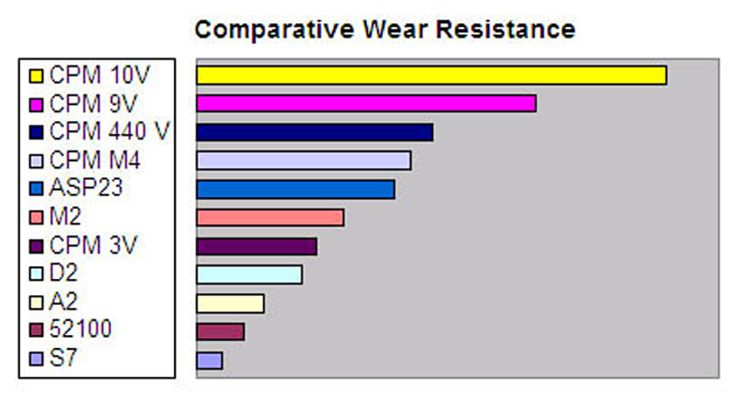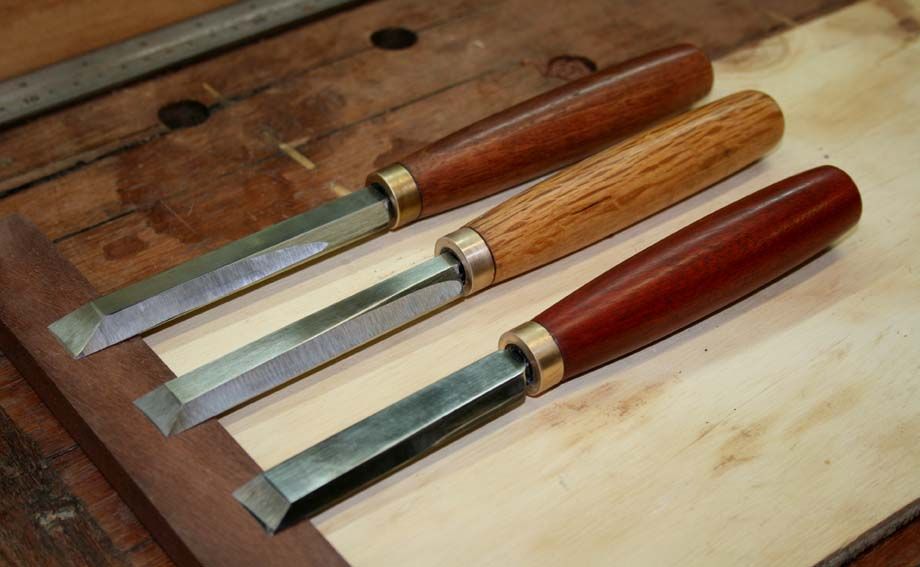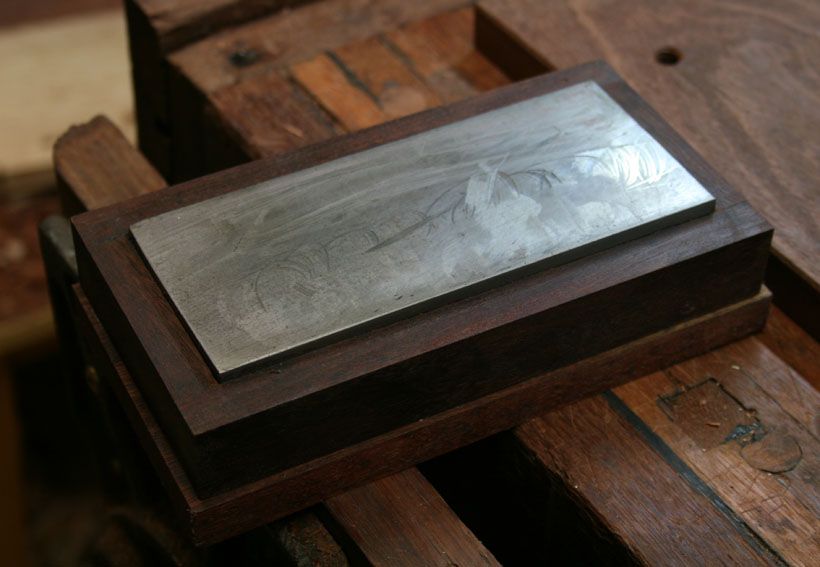Modernist
Established Member
Yet again we see a thread from a disappointed user of, in this case, Japanese chisels. It is easy to assume that after tens if not hundreds of years of development the metallurgy is sorted out. The metallurgy is but the application is still widely misunderstood.
There are now 3 camps, A2, O1 and laminated. They all work superbly in their specific environment but most of us use our tools across a range of applications which is where the problems start.
To start in the middle, good quality carbon steel chisels, such as Ashley Isles and others, will take and hold a keen edge at 30 deg honing angle 25 deg grinding and resist damage under a mallet. Frankly this is all anyone actually needs in a chisel and you can spend less for progressively worse performance or aesthetics. If you would prefer a keener edge at the expense of robustness then laminated Japanese is the way to go. For paring chisels there is no argument but since the hardness is at the limit of carbon steel metallurgy then a small error in manufacture can make them unusable for bench chisels owing to brittleness. If you are lucky you can avoid this but you will be paying a hefty price for the privilege. A2 has a tendency to crumble at honing angles <32 deg and IMHO has no place in chisel manufacture where edge quality is all and abrasive wear is not really an issue.
For planes the situation is different. Certainly O1 has carved a place in history and is fine for normal work in the millions of Records and Stanleys in use. A2 will certainly offer longer edge retention and has real advantages for abrasive timber. The obvious application is York and higher pitch planes for difficult work. For low angle work A2 is not the best choice as honing angles are limited and O1 will give a keener edge (and at a lower cost). I have never had any problems with my A2 LN 4 1/2 but that is used only for smoothing, not heavy shock work. Thicker blades work better and these are readily available in O1 at reasonable cost from the likes of Quangsheng. Laminated blades are available for planes but suffer from the same limitations as chisels and will be slower to sharpen.
In all cases effective sharpening is crucial and there are a plethora of alternatives to choose from. Many work but the finished result needs to be >= 8000 grit to be really sharp. Personally I put up with the mess and use a range of waterstones from 1000-8000. I find this effective for all 3 types of blade and it is not difficult to keep the stones flat if incorporated into the regular sharpening regime.
I don't think it is a case of either/or, rather a personal choice based on anticipated usage. It is nice to have a "range to choose from" to borrow a phrase from our friend Alf.
There are now 3 camps, A2, O1 and laminated. They all work superbly in their specific environment but most of us use our tools across a range of applications which is where the problems start.
To start in the middle, good quality carbon steel chisels, such as Ashley Isles and others, will take and hold a keen edge at 30 deg honing angle 25 deg grinding and resist damage under a mallet. Frankly this is all anyone actually needs in a chisel and you can spend less for progressively worse performance or aesthetics. If you would prefer a keener edge at the expense of robustness then laminated Japanese is the way to go. For paring chisels there is no argument but since the hardness is at the limit of carbon steel metallurgy then a small error in manufacture can make them unusable for bench chisels owing to brittleness. If you are lucky you can avoid this but you will be paying a hefty price for the privilege. A2 has a tendency to crumble at honing angles <32 deg and IMHO has no place in chisel manufacture where edge quality is all and abrasive wear is not really an issue.
For planes the situation is different. Certainly O1 has carved a place in history and is fine for normal work in the millions of Records and Stanleys in use. A2 will certainly offer longer edge retention and has real advantages for abrasive timber. The obvious application is York and higher pitch planes for difficult work. For low angle work A2 is not the best choice as honing angles are limited and O1 will give a keener edge (and at a lower cost). I have never had any problems with my A2 LN 4 1/2 but that is used only for smoothing, not heavy shock work. Thicker blades work better and these are readily available in O1 at reasonable cost from the likes of Quangsheng. Laminated blades are available for planes but suffer from the same limitations as chisels and will be slower to sharpen.
In all cases effective sharpening is crucial and there are a plethora of alternatives to choose from. Many work but the finished result needs to be >= 8000 grit to be really sharp. Personally I put up with the mess and use a range of waterstones from 1000-8000. I find this effective for all 3 types of blade and it is not difficult to keep the stones flat if incorporated into the regular sharpening regime.
I don't think it is a case of either/or, rather a personal choice based on anticipated usage. It is nice to have a "range to choose from" to borrow a phrase from our friend Alf.







